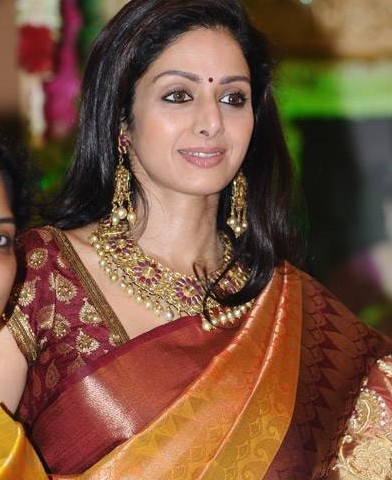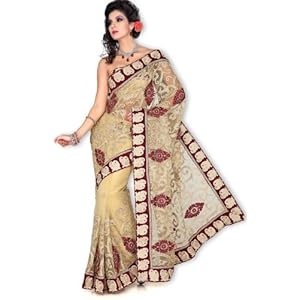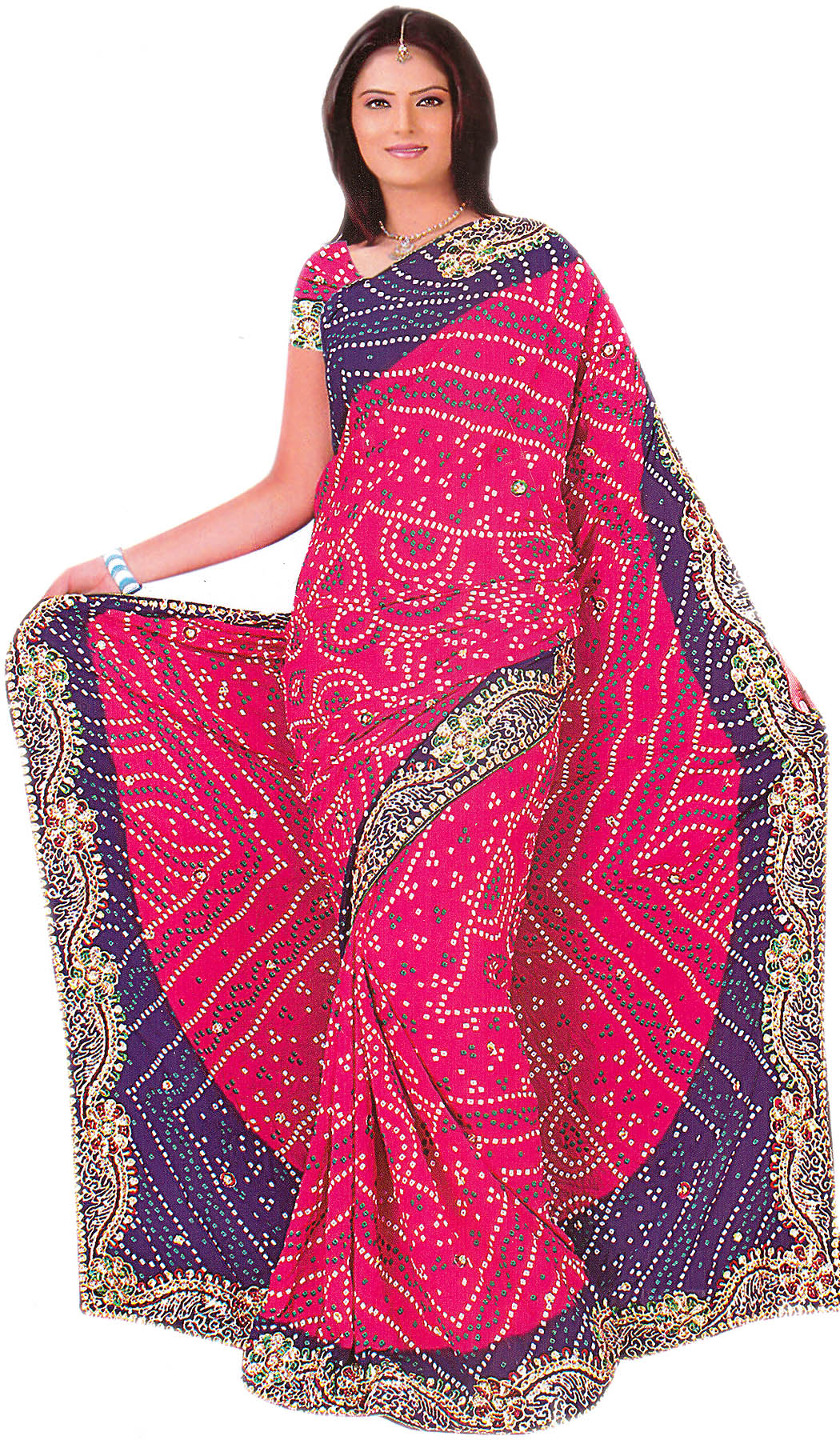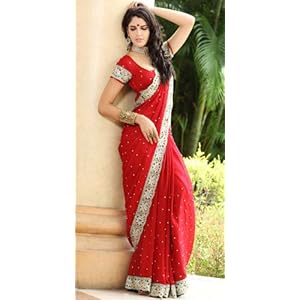Saree Biography
Source(Google.com.pk)Kanchipuram sari
A Kanchipuram sari (also known as a Kanjivaram sari) is a type of sari traditionally made by weavers from Kanchipuram located in Tamil Nadu, India. These are woven naturally. The Kanchipuram sari is distinguished by its wide contrast borders.
A single Kanchipuram sari can cost anywhere between INR2500 (US$42) to INR100000 (US$1,700) or more depending upon the intricacy of work, colors, pattern, material used like zari, gold thread etc.
Since 2005, Kanchipuram saris are protected by a Geographical Indicationlabel, certifying their origin.
Legend and history
According to legends in [Hindu mythology] Kanchi silk weavers are the descendants of Sage Markanda, the master weaver of Gods who is supposed to have woven tissue from lotus fibre. Also, while cotton is considered to the be the favourite fabric of Lord Shiva silk was preferred by Lord Vishnu.
Weaving method
To weave a Kanchipuram sari three shuttles are used. While the weaver works on the right side, his aide works on the left side shuttle. The border color and design are usually quite different from the body. If the pallu (the hanging end of the sari) has to be woven in a different shade, it is first separately woven and then delicately joined to the Sari. The part where the body meets the pallu is often denoted by a zig zag line.
Themes and motifs
Suns, moons, chariots, peacocks, parrots, swans, lions, coins, mangoes, leaves and many such motifs are woven into Kanchipuram patterns. Other common motifs include a jasmine bud within a square or a round frame, locally known asmallinaggu. Another is Thandavalam where parallel lines run across the body of the Sari.
Significance
Kanchipuram saris woven with heavy silk and gold cloth are considered to be special and are worn on occasions and festivities only.
Banarasi saris
Sari from Varanasi (Banaras), silk and gold-wrapped silk yarn with supplementary weft brocade (zari)
Banarasi saris are saris made in Varanasi, a city which is also called Benares or Banaras. The saris are among the finest saris in India and are known for their gold and silver brocade or zari, fine silk and opulent embroidery. The saris are made of finely woven silk and are decorated with intricate design, and, because of these engravings, are relatively heavy.
Their special characteristics are Mughal inspired designs such as intricate intertwining floral and foliate motifs, kalga and bel, a string of upright leaves calledjhallar at the outer, edge of border is a characteristic of these saris. Other features are gold work, compact weaving, figures with small details, metallic visual effects, pallus, jal (a net like pattern), and mina work.
The saris are often part of an Indian bride's trousseau.
Depending upon the intricacy of designs and patterns, a sari can take from 15 days to a one month and sometimes up to six months to complete. Banarasi saris are mostly worn by Indian women on important occasions such as when attending a wedding and are expected to be complemented by the woman's best jewelry.
Varieties
There are four main varieties of Banarasi sari, which includes pure silk (Katan), Organza (Kora) with Zari and silk;Georgette, and Shattir, and according to design process, they are divided into categories like, Jangla, Tanchoi, Vaskat,Cutwork, Tissue and Butidar
Environment concern
Since a large number of silk dyeing units in the trade, use chemical dyes, which cause pollution in the Ganges River, a move is on to shift to natural dyes. Research team from the Indian Institute of Technology, Banaras Hindu University (IIT-BHU) used the technique of solvent extraction and enzymatic extraction to developed natural colours from plants, flowers and fruits including accaccia, butia (palash), madder, marigold and pomegranate (anar)
Similarities and differences with other Asian clothing
While the sari is typical to Indian traditional wear, clothing worn by South-East Asian countries like Burma, Malaysia, Philippines, and Singapore resemble it, where a long rectangular piece of cloth is draped around the body. These are different from the sari as they are wrapped around the lower-half of body as a skirt, worn with a shirt/blouse, resembling a sarong, as seen in the Burmese Longyi, Filipino Malong, Tapis, Laotian Xout lao, Thai Sinh's, and Timorese Tais. Saris, worn predominantly in India, Pakistan, Sri Lanka, Bangladesh, and Nepal are usually draped with one end of the cloth fastened around the waist, and the other end placed over the shoulder baring the midriff.
Designer Saree Indian Lehnga Dress Suites Design 2014 Choli Photos Pics Images Wallpapers
Designer Saree Indian Lehnga Dress Suites Design 2014 Choli Photos Pics Images Wallpapers
Designer Saree Indian Lehnga Dress Suites Design 2014 Choli Photos Pics Images Wallpapers
Designer Saree Indian Lehnga Dress Suites Design 2014 Choli Photos Pics Images Wallpapers
Designer Saree Indian Lehnga Dress Suites Design 2014 Choli Photos Pics Images Wallpapers
Designer Saree Indian Lehnga Dress Suites Design 2014 Choli Photos Pics Images Wallpapers
Designer Saree Indian Lehnga Dress Suites Design 2014 Choli Photos Pics Images Wallpapers
Designer Saree Indian Lehnga Dress Suites Design 2014 Choli Photos Pics Images Wallpapers
Designer Saree Indian Lehnga Dress Suites Design 2014 Choli Photos Pics Images Wallpapers
Designer Saree Indian Lehnga Dress Suites Design 2014 Choli Photos Pics Images Wallpapers
Designer Saree Indian Lehnga Dress Suites Design 2014 Choli Photos Pics Images Wallpapers
Designer Saree Indian Lehnga Dress Suites Design 2014 Choli Photos Pics Images Wallpapers
Designer Saree Indian Lehnga Dress Suites Design 2014 Choli Photos Pics Images Wallpapers
Designer Saree Indian Lehnga Dress Suites Design 2014 Choli Photos Pics Images Wallpapers
Designer Saree Indian Lehnga Dress Suites Design 2014 Choli Photos Pics Images Wallpapers
Designer Saree Indian Lehnga Dress Suites Design 2014 Choli Photos Pics Images Wallpapers
Designer Saree Indian Lehnga Dress Suites Design 2014 Choli Photos Pics Images Wallpapers
















No comments:
Post a Comment